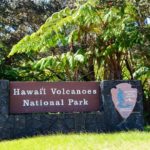Kīlauea volcano is not erupting at this time. Over the past week, no significant changes have been observed at the summit or in either rift zone.
In the last seven days, seismicity has been at low levels, with a slight increase the morning of August 1. Summit tiltmeters recorded minor net inflation over the week with two deflation-inflation (DI) events. Sulfur dioxide (SO2) emissions from the summit remain low; the most recent SO2 emission rate, of approximately 122 tonnes per day, was measured on July 28.
No active lava has been observed since June 19. No unusual activity has been noted along the East Rift Zone or Southwest Rift Zone; steady rates of ground deformation and seismicity continue along both. Measurements from continuous gas monitoring stations downwind of Puʻuʻōʻō in the middle East Rift Zone remain below detection limits for SO2, indicating that SO2 emissions from Puʻuʻōʻō are negligible.The latest eruptive activity at Kīlauea’s summit occurred at the base of Halemaʻumaʻu crater, within the closed area of Hawaiʻi Volcanoes National Park. During Kīlauea summit eruptions, the high level of volcanic gas—primarily water vapor (H2O), carbon dioxide (CO2), and sulfur dioxide (SO2)—being emitted is the primary hazard of concern, as this hazard can have far-reaching effects downwind.
Other significant hazards also remain around Kīlauea caldera from Halemaʻumaʻu crater wall instability, ground cracking, and rockfalls that can be enhanced by earthquakes within the area closed to the public. This underscores the extremely hazardous nature of the rim surrounding Halemaʻumaʻu crater, an area that has been closed to the public since early 2008.
The Hawaiian Volcano Observatory (HVO) continues to closely monitor Kīlauea Volcano.
Photo credit: Hawaiʻi Volcanoes National Park
